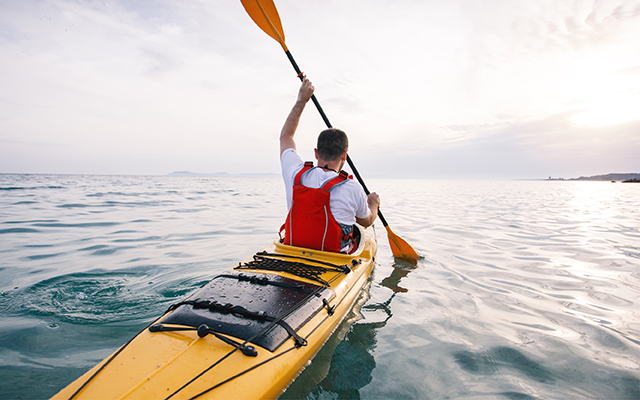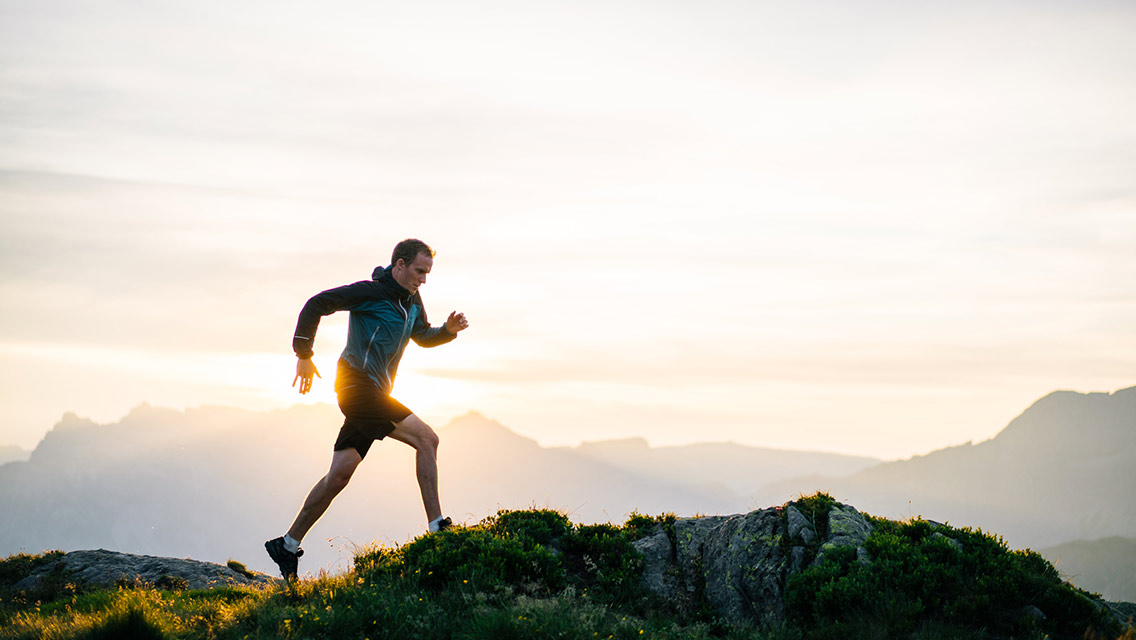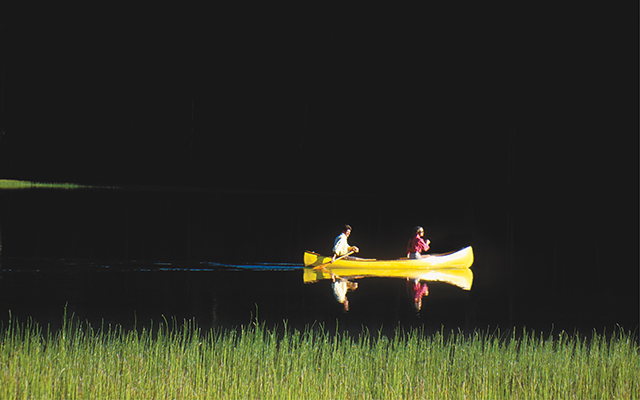Kayaking is a mode of transport and a sport. Because it’s accessible for people of varying physical abilities, fitness levels, and geographies, almost anyone can become a paddler. And with a few technique tips and training drills, most people can quickly progress to proficiency.
“Physically, developing proper paddling technique is a worthy challenge to perfect but will take you to many scenic places in the process,” says Kelsey Bracewell, safety education and instruction manager for the American Canoe Association (ACA) in Fredericksburg, Va.
“Mentally, kayaking helps you escape the stresses of life by allowing you to become one with the water and literally go with the flow — which is a concept that can transfer to other places of work, play, and rest.”
Kayaking efficiency is much more about your midsection and your posture in the boat than your upper body. Sure, muscular shoulders, biceps, and triceps will help propel the vessel forward, but paddling efficiently requires more than simply building muscle.
“Consider the arms more as struts that connect the paddle to the torso — they keep the paddle and the chest parallel,” Bracewell explains.
Shifting your focus from upper-body brawn to coordinating the movement from your core is key. This will help you avoid wasting energy in your arm muscles as well as prevent discomfort. And you’ll find you can go faster and farther.
In the gym your kayaking prep can include rowing movements (such as pull-ups, TRX inverted rows, seated cable rows, or bent-over rows); core-strengthening and stabilization moves (think Russian twists and Palloff presses); and hip-opening stretches to offset the time spent seated. (For hip-mobility moves, visit “Mobilize Your Hips.”)
Additionally, sport-specific drills on and off the water will help you improve your kayaking experience. Try the following recommendations from our experts.
Kayaking Training and Techniques
Drill 1: Build Core Strength
“The paddle stroke comes from the core,” says kayak guide Gail Green, owner of Wisconsin-based guiding company Living Adventure. She recommends this no-water-required exercise.
- Sit on the floor facing a wall and plant your feet where the wall meets the floor, with legs outstretched but knees loose.
- Hold a pole or broom in front of you with arms bent at 90 degrees (as if you’re holding a paddle).
- Lightly press against the wall with your left foot as you rotate your torso toward the left. Switch legs and apply pressure through your right foot as you rotate to the right.
- Twist from left to right with core engaged, mimicking the paddle stroke. Repeat for three sets of 20 reps (each rotation counts as one).
(Try these “6 Dynamic Core Training Exercises” that feature rotation and anti-rotation moves.)
Drill 2: Sitting on Edge With a Side Crunch
This in-water drill builds strength and muscle memory, says renowned kayaking expert and certified ACA trainer Anna Levesque.
- Start by sitting in your kayak in still water.
- Hold your paddle up and concentrate all of your weight in your left butt cheek, tilting your kayak slightly on edge to the left.
- Crunch the muscles together on your right side as if you were doing a side crunch at the gym. Hold for at least five to 10 seconds.
- Repeat on the other side.
Drill 3: Paddle in the Mud
“Our instinct when we start kayaking is to plant our paddle in the water and pull it through with our arms,” Levesque says. “This way of paddling feels more natural at first because it’s easier. But pulling with your arms requires more of a struggle and is less efficient than planting your paddle and then moving from your core to move your boat.”
Levesque recommends this exercise to help you understand how your core should engage with every stroke.
- While in a kayak, get close to the bank of a river or lake in a spot that is muddy enough for you to stick your paddle in the mud.
- Hold your paddle as if you were going to do a stroke and stick one blade in the mud instead of the water.
- With your blade firmly planted in the mud, move the bow of your boat away from and then toward the bank, using your core muscles. Repeat the motion several times until you get a good feel for how your abdominals are engaging. Using your core to move the boat will feel much more powerful than just using your arms.
Balancing Act
Many kayakers fear capsizing. Guide Gail Green recommends practicing turnovers (“wet exits”) and techniques for righting your kayak in a comfortable environment: shallow, warm water with a friend nearby.
To right your kayak, reach under it, grip the near cockpit coaming, or edge, with one hand and the far cockpit coaming with the other to lift and flip the boat upright without allowing excess water in.
Next, practice both assisted and unassisted techniques for getting back into your kayak. “Balance is key,” Green says. “Grow into it slowly, because you want to love kayaking for your whole life.”
This originally appeared as “Go With the Flow” in the July/August 2018 print issue of Experience Life.




This Post Has One Comment
Great tips and very well explained too but are these tips effective for complete beginners?